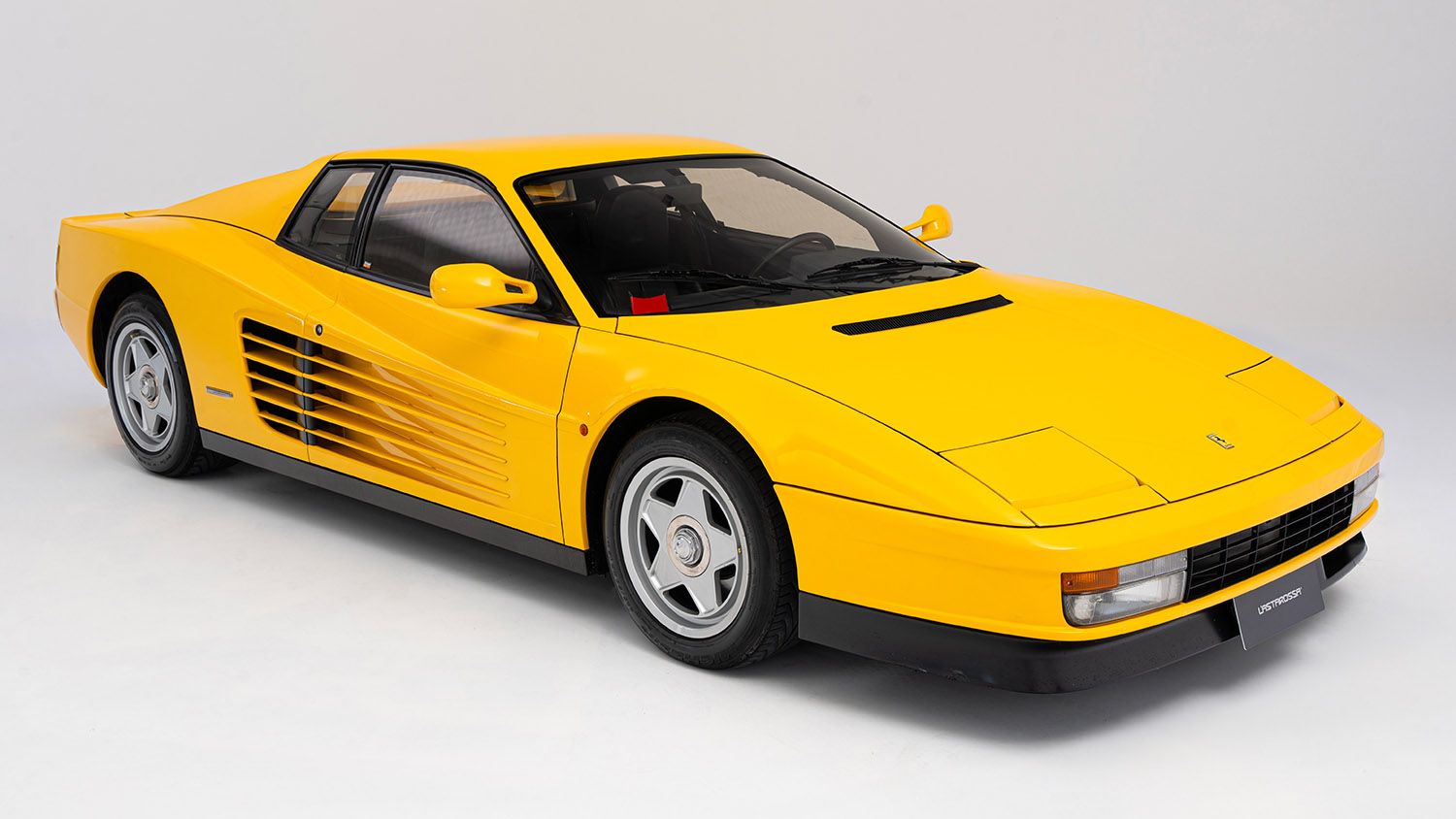BUYER’S GUIDE
Ferrari Testarossa review
As pure an expression of red-blooded ‘80s excess as you can get, the Testarossa more than lives up to the hype…
Engine
4,943cc flat-12, petrol
Power
390PS (287kW) @ 6,300rpm
Torque
490Nm (361lb ft) @ 4,500rpm
Kerb weight
1,506kg (dry)
0-62mph
5.8 seconds
What Is It?
The 1980s reboot of a mid-engined flat-12 lineage starting in the early ‘70s with the 365 GT4 BB, the Testarossa was a dramatically different looking car whose signature side-strakes were often mimicked but never bettered. These contained repositioned radiators for improved luggage space and comfort over the 365 and 512 BB and make the Testarossa a surprisingly usable GT for a mid-engined supercar. A nice bonus, but nostalgia will be the main motivation for buying, whether that be driven by appearances in Miami Vice, it’s starring role in the Outrun video game or simply a poster Blu-Tacked to a teenage bedroom wall.
Corrosive Areas
Wheel arch inners
Sills
Side strakes
Checklist
- Testarossa launched in 1984 as a development of the 512 BB but with a four-valve engine and significant improvements to packaging
- Early cars distinctive for the single, high-mounted external mirror which was controversial at the time but now coveted by collectors
- Original wheel design used centre-lock fixing and metric tyres, this later changed to imperial before more conventional five-stud wheels appeared in 1987
- Metric tyres can be hard to find and centre-locks can come loose, which are considerations if you intend to use the car
- Mainly aluminium bodywork means visible rust is less of an issue but steel frame, doors and roof can conceal potentially expensive corrosion
- Engines are considered tough but are demanding of proper care – cambelts need changing every five years, which is an engine out job and opportunity to change the clutch and other ancillaries, all of which costs
- Lack of use can mean gummed up coolant pipes, poor running and other issues that will be expensive to rectify – evidence of regular driving as well as servicing is desirable
- Engine can be lumpy when cold and the gearbox will be stiff – both should smooth out as car warms so beware any persistent noises, smoke or other concerns
- Post-1987 engines had various upgrades, including chain-driven water/oil pump – many earlier cars will have had this retrofitted in later life
- Testarossa production ended in 1991 after a successful production run of over 7,000 cars, the car evolving into the dynamically improved and faster 512 TR in 1991 and then again into the 512 M in 1994 with glazed rather than pop-up lights
- The later models drive a lot better but the looks of the Testarossa will always make it more desirable
How does it drive?
Big, wide and relatively heavy, the Testarossa is an intimidating and physical driving experience thanks to its size, non-assisted steering and the truculence of its gated manual shift. All of which you’ll forgive once the fluids warm through, the speeds rise and characteristics that make it hard work around town fade into the background and appreciation of that glorious 12-cylinder engine comes to the fore. If less hard-edged than the Lamborghini Countach it was always compared with in period, the Testarossa is still an analogue experience compared with modern supercars, and will reward an engaged driver with a suitably thrilling experience.
What’s good?
Those looks have come full circle from iconic for the era, through naff and now back into full appreciation for the still unique style. If not as manic as some supercars, the Testarossa combines this visual appeal with performance, comfort and usability perfectly in tune with the relatively more mature and relaxed driving style it encourages. If you’re more focused on the driving experience than the purist ‘80s looks the later 512 TR that replaced, it has the same fundamental vibe but sharper handling and significantly improved pace.
What’s bad?
Modern supercars have caught up in terms of girth but there’s no escaping the fact a Testarossa takes up a lot of real estate on the road, and those big hips can make narrower roads a stress. Iconic or not, nor is it the fastest or sharpest of supercars, while the on-limit handling demands respect thanks to the unexpectedly high centre-of-gravity of the heavy engine, positioned as it is atop the transmission. Servicing it properly is also going to require a well-stocked wallet, the expensive upkeep required whether you’re driving it or keep it parked up. So, you may as well get out there and enjoy it!
Which model to choose?
Earlier cars with the distinctive high-mounted ‘monospecchio’ driver’s mirror and centre-lock wheels will inevitably appeal to the purists and command a premium accordingly. But later cars have detail improvements, and the swap from metric to regular tyre sizes is one less thing to worry about. Given the cars run better when driven and servicing will cost you the same either way, we’d be less hung up on mileage than condition, history and evidence of regular use. Relatively high production numbers mean there’s a bit less pressure to keep it tucked away as an investment than some other Ferraris, and if you’re going to pay the maintenance costs anyway you may as well buy a Testarossa to enjoy rather than just covet.
Specifications – Ferrari Testarossa
Engine
4,943cc flat-12, petrol
Power
390PS (287kW) @ 6,300rpm
Torque
490Nm (361lb ft) @ 4,500rpm
Transmission
Five-speed manual, rear-wheel drive
Kerb weight
1,506kg (dry)
0-62mph
5.8 seconds
Top speed
180mph
Production dates
1984-1991 (total production)
